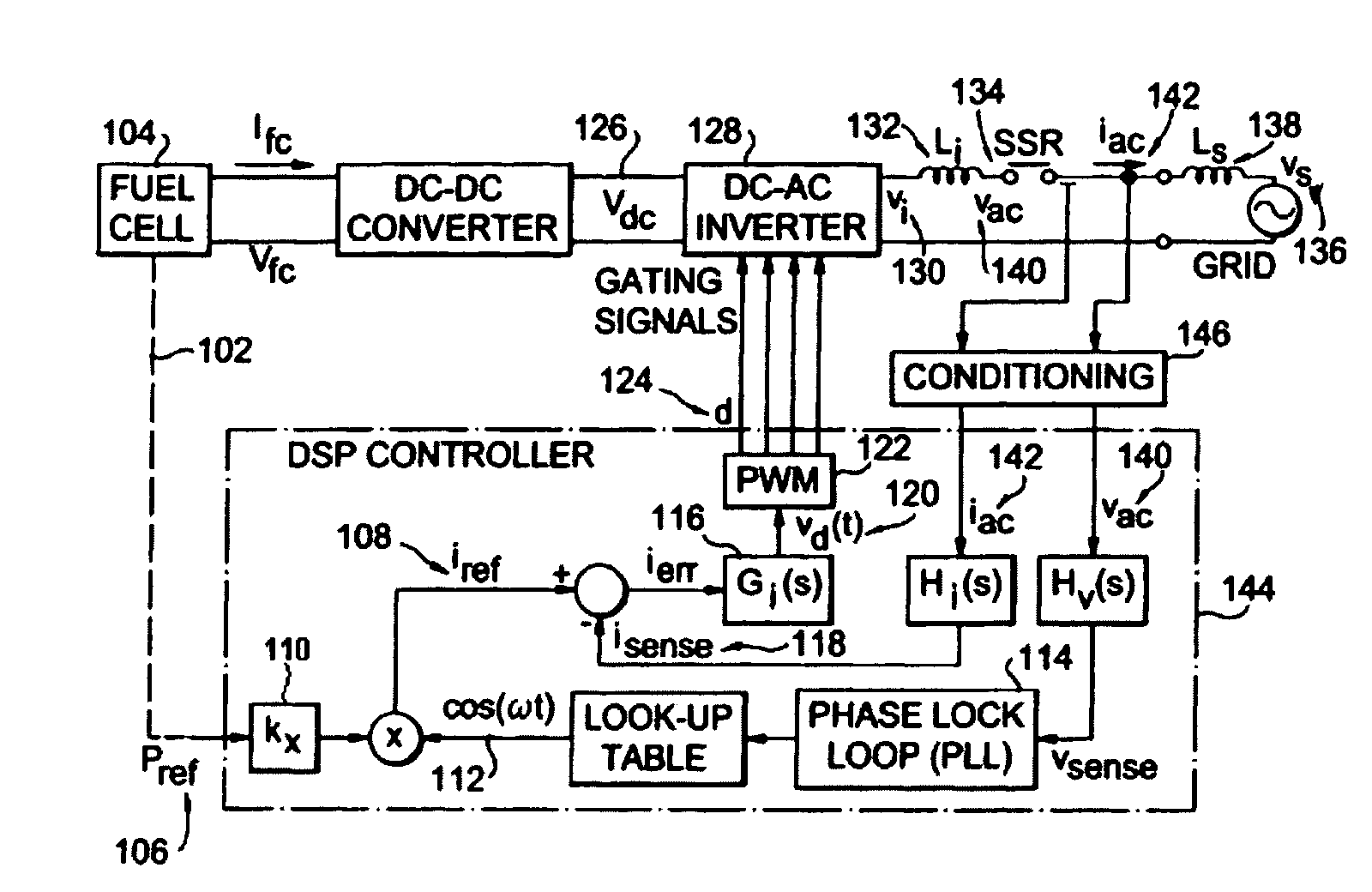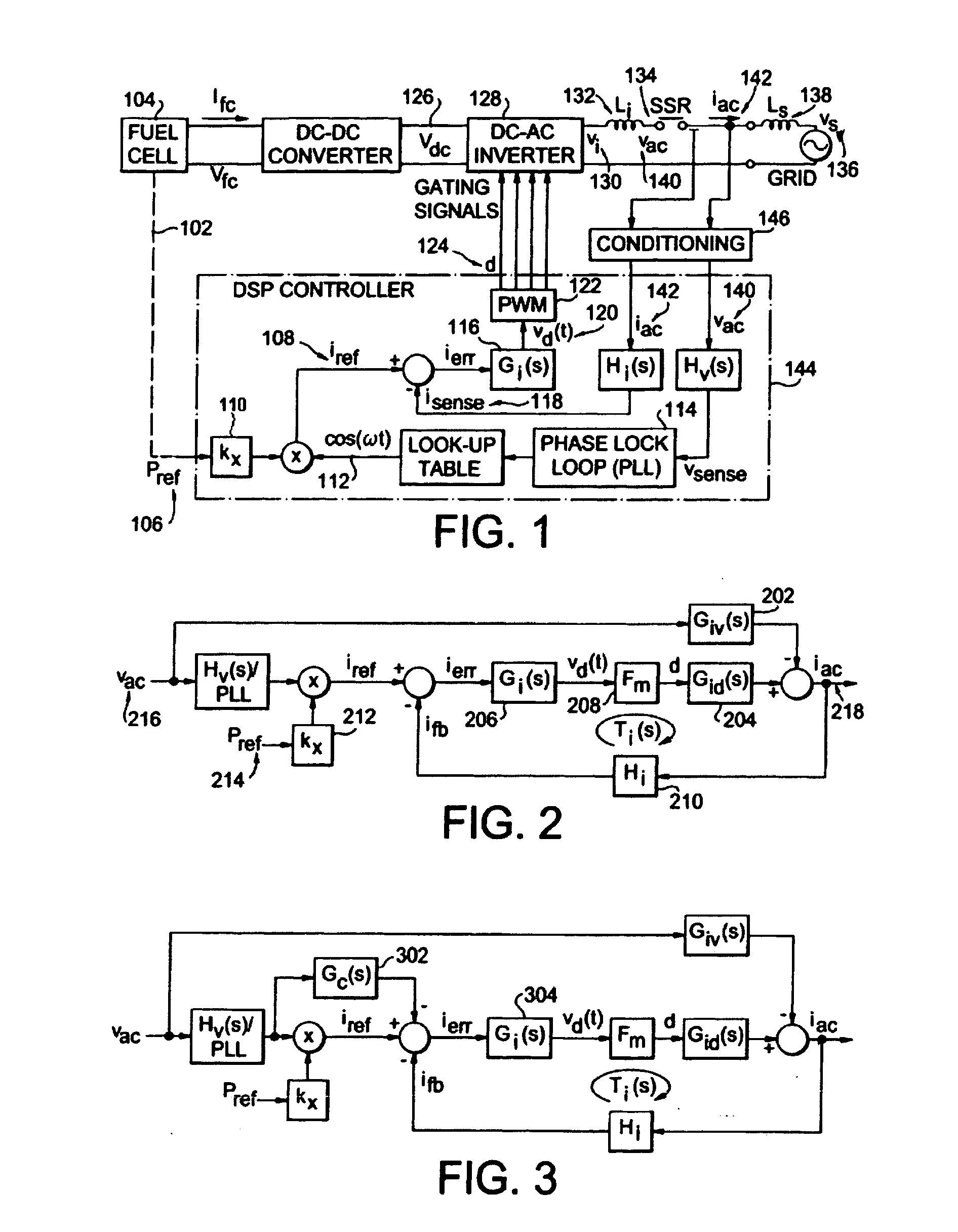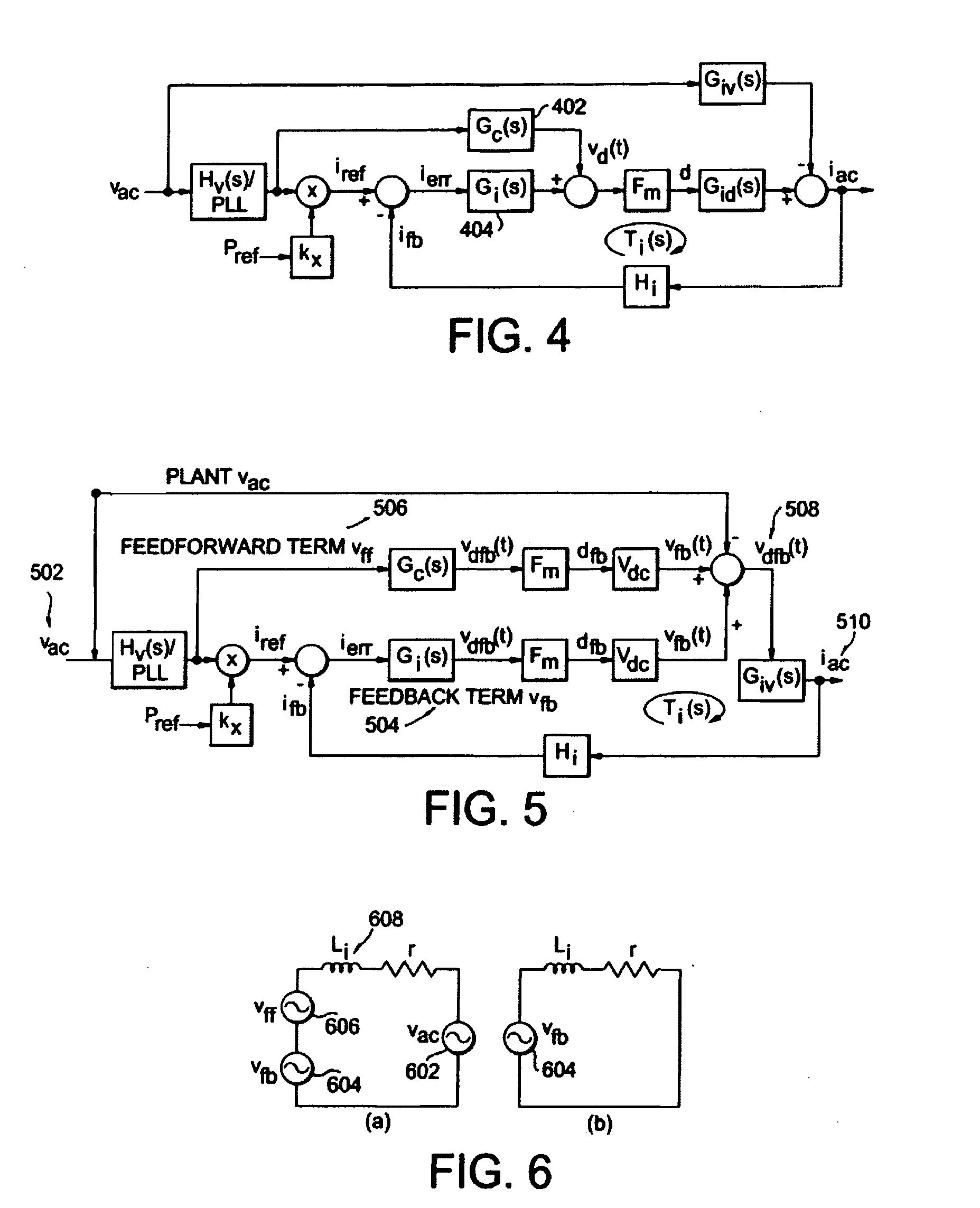Control system and method for a universal power conditioning system
a control system and power conditioning technology, applied in power conversion systems, climate sustainability, electrical equipment, etc., can solve problems such as affecting the output power quality, steady-state error in ac power output can be decomposed, and fuel cell power conditioning output suffers from steady-state error problems
- Summary
- Abstract
- Description
- Claims
- Application Information
AI Technical Summary
Benefits of technology
Problems solved by technology
Method used
Image
Examples
experimental verification
[0069
[0070]A PCS prototype, shown in FIG. 12, comprising of a DC-DC converter to boost the fuel cell voltage from about 25V to 400V and a dc-ac inverter that produces 208 Vrms ac output for the grid connection was tested with a solid oxide fuel cell (SOFC) simulator 1202, which mimics an actual low-voltage SOFC that has a stack of 36 cells operating at 1000° C. FIG. 12 shows a photograph of the test setup with the PCS prototype 1204 and associated instrumentation. A precision current shunt 1206 is used to calibrate the current measurement. The front panel of the case is open to show the DSP board 1208 which, in the prototype embodiment, is an in-house developed TMS320F2812 control board containing all necessary interfaces and signal conditioning circuits.
[0071]FIG. 13A shows the start-up waveform of the grid-tie inverter operation. The SSR logic 1302 may be commanded on 1304 at any time, but the actual switch-on point is at the zero crossing 1306. The PWM logic signal 1308 will not ...
PUM
 Login to View More
Login to View More Abstract
Description
Claims
Application Information
 Login to View More
Login to View More - R&D
- Intellectual Property
- Life Sciences
- Materials
- Tech Scout
- Unparalleled Data Quality
- Higher Quality Content
- 60% Fewer Hallucinations
Browse by: Latest US Patents, China's latest patents, Technical Efficacy Thesaurus, Application Domain, Technology Topic, Popular Technical Reports.
© 2025 PatSnap. All rights reserved.Legal|Privacy policy|Modern Slavery Act Transparency Statement|Sitemap|About US| Contact US: help@patsnap.com



